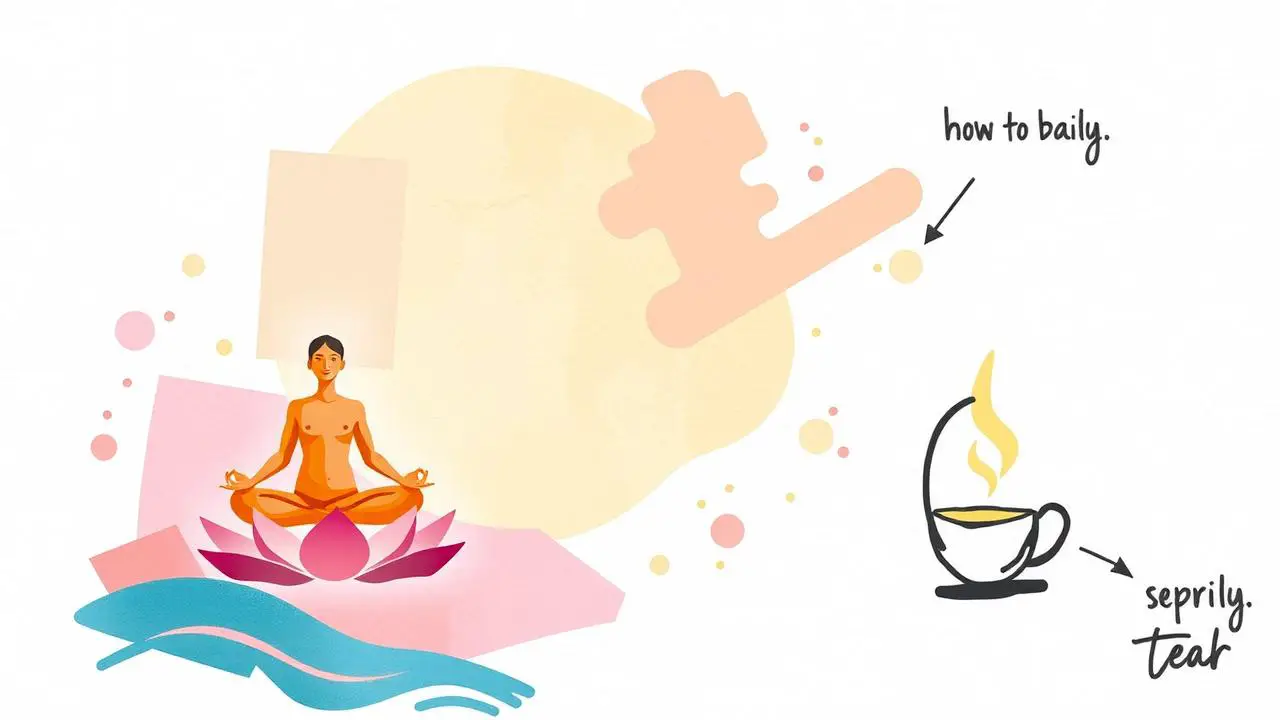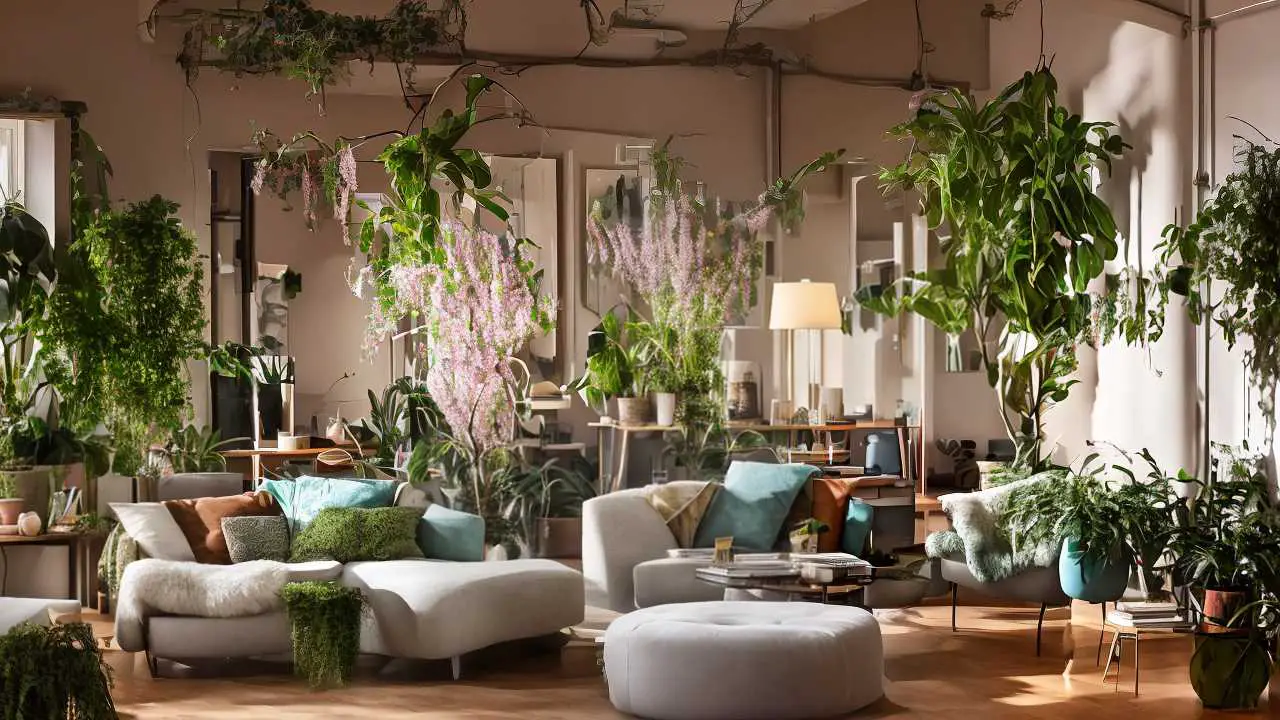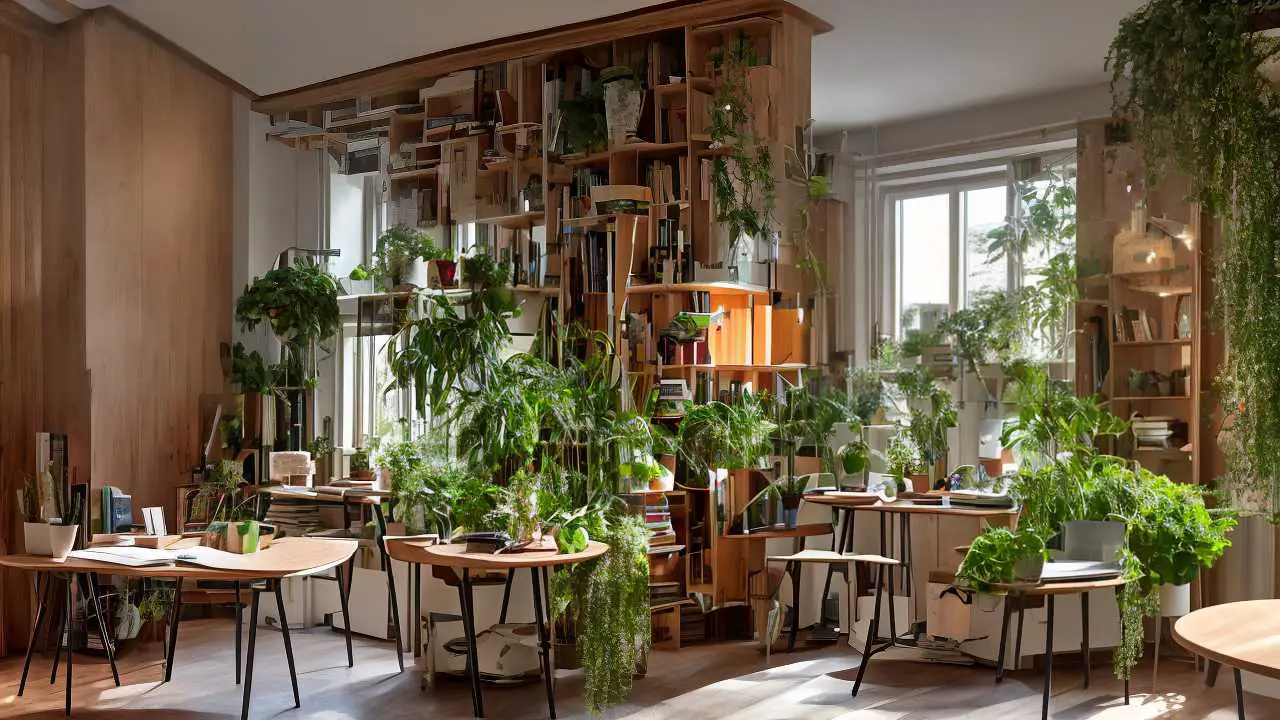You’re surrounded by chaos. The world is moving at a breakneck pace, and you feel like you’re barely keeping up. You long for a sense of calm, for a moment to catch your breath and find peace in the midst of the storm.
But where can you turn when everything around you seems designed to keep you on edge?
The answer lies within your own home. By creating a relaxing environment that nurtures your mind, body, and spirit, you can tap into the healing power of serenity. Science has shown that our surroundings have a profound impact on our well-being, from reducing stress and anxiety to improving sleep quality and boosting cognitive function.
In this article, we’ll explore the science behind serenity and show you how to create a calming home environment that will help you find balance in an increasingly chaotic world.
The Importance of a Calming Home Environment
Creating a calming atmosphere in your living space can significantly improve your overall well-being. Through color psychology and Feng Shui, you can transform your home into a peaceful sanctuary that promotes relaxation and serenity.
Color psychology suggests that certain colors have a direct impact on our mood and emotions. For example, shades of blue, green, and lavender have calming properties that promote relaxation. By incorporating these colors into your home decor, you can create a soothing environment that helps reduce stress levels.
Additionally, following the principles of Feng Shui for a calming home environment involves placing furniture in strategic locations to promote positive energy flow. This practice can help create an atmosphere of tranquility, which is essential for cultivating inner peace.
Understanding the science behind serenity is crucial in creating a relaxing home environment. By learning about how different factors such as color psychology and Feng Shui contribute to our well-being, you can take proactive steps towards promoting a sense of calmness and balance in your life.
Understanding the Science Behind Serenity
By delving into the reasons behind our emotional response to a peaceful environment, we can better understand how to cultivate a sense of tranquility in our daily lives.
One factor that greatly affects our mood is color. Studies have shown that certain colors promote relaxation and calmness, such as soft blues, greens, and neutrals. These colors can be incorporated into your home decor through paint choices, bedding, and accent pieces.
Another element that contributes to a serene environment is aromatherapy. Essential oils like lavender and chamomile are known for their calming effects on the mind and body. Adding these scents to your living space through candles or diffusers can help create a peaceful atmosphere.
Understanding the impact of color and the role of aromatherapy in creating a relaxing home can greatly improve your overall well-being.
Now, let’s move on to decluttering and simplifying your living space to further enhance your serenity at home.
Decluttering and Simplifying Your Living Space
Let’s clear out the clutter and simplify our living space to create a calm and peaceful oasis. Minimalist design and Feng Shui principles encourage us to get rid of anything that no longer serves us.
Start by going through your belongings and getting rid of anything that you haven’t used in over six months or that doesn’t bring you joy. Donate or sell items that are still in good condition, recycle what can be recycled, and dispose of the rest properly.
Once you’ve decluttered, focus on creating a minimalist design for your home. This means using only essential furniture pieces and decor items that have meaning to you. Remember to incorporate Feng Shui principles like natural light, good air circulation, and avoiding sharp corners or reflective surfaces.
By simplifying your living space, you’ll feel more relaxed and able to unwind after a long day. And when we return shortly, we’ll show how incorporating nature into your home can also help promote serenity within your environment!
Incorporating Nature into Your Home
Bring the outdoors in and infuse your living space with a breath of fresh air, like a cool breeze on a hot summer day. Incorporating nature into your home can have an immediate impact on your mood and well-being.
Here are three simple ways to bring more natural elements into your space:
- Invest in indoor plants. Not only do they add a touch of greenery to your décor, but research shows that having plants indoors can improve air quality and reduce stress levels.
- Make the most of natural light. Open up curtains or blinds during the day to let in as much sunlight as possible. Natural light has been linked to improved sleep, increased productivity, and reduced symptoms of depression.
- Add natural textures and materials. Consider incorporating wood accents or stone surfaces into your space for a touch of earthy texture.
By incorporating these small changes into your home environment, you can create a calming atmosphere that invites relaxation and rejuvenation. And speaking of relaxation, creating a cozy and comfortable atmosphere is another important aspect of achieving serenity at home…
Creating a Cozy and Comfortable Atmosphere
Transform your living space into a warm and inviting retreat by incorporating comfortable textures and furnishings that evoke feelings of coziness and contentment. Start by creating a cozy reading nook in your home. Find a corner that gets good natural light, add some soft pillows, a plush throw blanket, and an armchair or chaise lounge.
Place a small side table next to your chair where you can rest your cup of tea or book. You can also use aromatherapy in your decor to create a relaxing atmosphere. Place candles around the room with scents like lavender or vanilla to promote calmness and relaxation.
Add some essential oils to your diffuser for an additional boost of relaxation. These simple additions will make your home feel more comfortable and welcoming, allowing you to unwind after a long day.
Now, let’s discuss reducing noise and distractions in order to fully embrace serenity in your home.
Reducing Noise and Distractions
If you’re looking to create a calm and peaceful environment in your home, reducing noise and distractions is essential.
To achieve this, consider implementing soundproofing strategies such as adding curtains or rugs to absorb sound.
Additionally, minimizing electronic devices can help reduce the amount of background noise and visual clutter in your space.
With these simple changes, you can create a more serene atmosphere that promotes relaxation and focus.
Soundproofing Strategies
You want to create a peaceful environment in your home, and one way to achieve this is by implementing soundproofing strategies that can help you escape the noise of the outside world.
One option is to install acoustic panels on your walls, which absorb sound waves and reduce echoes in a room. These panels come in a variety of shapes and sizes, so you can choose ones that fit with your decor.
Additionally, double glazed windows are another effective way to block out unwanted noise from traffic or neighbors.
By minimizing noise pollution in your home, you’ll be better able to relax and unwind after a long day.
But reducing distractions doesn’t stop at soundproofing – it’s important to also consider the impact of electronic devices on your mental health.
Minimizing Electronic Devices
It’s easy to get caught up in the convenience of electronic devices, from smartphones and laptops to TVs and gaming consoles. But did you know that taking a break from them can actually help maximize your productivity?
By minimizing your screen time, you’ll be able to focus more on tasks at hand without constant distractions. You’ll also have more mental space to connect with yourself and those around you on a deeper level.
Reducing electronic device usage can also have positive effects on your physical health. Screen time has been linked to disrupted sleep patterns, eye strain, headaches, and even neck pain.
By taking small steps like turning off notifications or setting designated times for checking emails and social media, you’ll be able to reduce these negative effects while increasing your overall well-being.
With less distraction from screens, it becomes easier to cultivate mindfulness and relaxation techniques that will help promote serenity in your home – which we’ll explore more in our next section!
Practicing Relaxation Techniques
Let’s dive into some simple techniques that can help you unwind and destress in the comfort of your own space. One effective method is visualization. Close your eyes and imagine a peaceful place, such as a beach or forest. Focus on the details, like the sound of waves or leaves rustling in the wind. This technique helps to calm your mind and release tension from your body.
Another great way to relax is through breathing exercises. Take slow, deep breaths while focusing on inhaling and exhaling evenly. As you breathe, try counting to four during each inhale and exhale to increase mindfulness. This technique helps lower heart rate and blood pressure while promoting relaxation.
As you start incorporating these techniques into your daily routine, it’s important to remember that creating a serene home environment also plays a crucial role in achieving inner peace. So let’s explore ways to bring tranquility into every aspect of your living space.
Incorporating Serenity into Your Daily Routine
Bringing a sense of calm into our daily lives can be achieved through simple yet effective techniques and intentionally creating an environment that fosters tranquility. One way to incorporate serenity into your daily routine is by practicing relaxation exercises such as deep breathing or progressive muscle relaxation. These techniques help reduce stress and promote a more peaceful state of mind.
Another way to cultivate serenity in your day-to-day life is through mindfulness practices. Mindfulness involves being fully present in the moment and non-judgmentally observing one’s thoughts and feelings. This practice can help you stay centered and focused on what truly matters, rather than getting caught up in distractions or worries.
To integrate mindfulness into your daily routine, try setting aside a few minutes each day for meditation or simply taking time to appreciate the beauty around you. Remember, creating a relaxing home starts with small steps towards inner peace!
Frequently Asked Questions
What are some common relaxation techniques that can be practiced at home?
To find relaxation at home, there are a variety of techniques you can try. First and foremost, consider investing in a meditation pillow to help you get comfortable during your practice.
Breathing exercises are another simple but effective way to calm your mind and body. Focus on taking deep breaths in through your nose and out through your mouth, slowing down the pace as you go.
You can also try visualization exercises where you imagine yourself in a peaceful place, or progressive muscle relaxation where you tense and then release each muscle group one at a time.
Whatever technique works best for you, make it a regular part of your routine to achieve maximum benefits.
How can incorporating nature into your home environment improve your overall well-being?
So, you think adding a few plants to your living room will make you feel more at peace? Well, it’s not that simple.
Incorporating nature into your home environment, also known as biophilic design, has been shown to have numerous benefits for your overall well-being. From reducing stress and anxiety to improving cognitive function and creativity, the impact of bringing nature indoors can be profound.
Additionally, color psychology plays a crucial role in creating a calming atmosphere. Soft greens and blues evoke feelings of tranquility while bold reds and oranges can stimulate energy levels.
So go ahead, embrace the power of biophilic design and color psychology in your home décor – it just might be the key to unlocking your inner zen.
What are some tips for reducing noise and distractions in your living space?
Looking to create a peaceful environment in your home? One of the best ways to achieve this is by reducing noise and distractions.
Sound proofing solutions can be a great option for minimizing outside noises, while minimalist decor can help declutter your space and create a sense of calm.
You may also want to consider adding soft furnishings or plants to absorb sound and add natural elements to your home.
By taking these steps, you’ll be well on your way to creating a serene oasis where you can relax and unwind.
How can creating a cozy and comfortable atmosphere in your home contribute to feelings of serenity?
You deserve to come home to a space that makes you feel relaxed and at ease. One way to achieve this is by creating a cozy and comfortable atmosphere in your home.
The importance of lighting cannot be overstated, as it can greatly affect your mood and overall sense of calm. Soft, warm lighting can make all the difference in creating a peaceful atmosphere.
Additionally, color psychology plays a role in how we feel in our surroundings. Choosing calming colors such as blues or greens can promote feelings of tranquility and relaxation.
By taking these steps towards creating a serene space, you’re giving yourself the gift of freedom from stress and anxiety when you enter your home each day.
Are there any specific scents or aromas that can help promote relaxation and calmness in a home environment?
If you’re looking to create a relaxing and calming environment in your home, scents for relaxation can be a great tool. Aromatherapy benefits have been known for centuries, and certain smells like lavender, chamomile, and jasmine can help promote feelings of calmness and tranquility.
You can use essential oils or candles to infuse these scents into your home. Additionally, fresh flowers or herbs can also add natural aromas to your space.
By incorporating these scents into your home, you’ll create an atmosphere that promotes relaxation and helps you feel more at ease.
Can a Relaxing Home Environment Provide the Same Benefits as a Serenity Retreat for Adult Relaxation?
Creating a relaxing home environment with calming decor and a peaceful atmosphere can provide the same benefits as a serenity retreat for relaxation. By incorporating soothing elements such as soft lighting, comfortable seating, and tranquil colors, adults can escape the stress of everyday life without leaving home.
Conclusion
Congratulations! You’ve taken the first step in transforming your home into a serene sanctuary. By understanding the science behind serenity, you can create a calming environment that promotes relaxation and healing.
Remember, decluttering and simplifying your living space is crucial. It allows you to focus on what truly matters, without being distracted by unnecessary items.
Incorporating nature into your home through plants or natural materials can also bring peace and tranquility to any room.
As you continue to make changes, don’t forget to take time for yourself and practice relaxation techniques regularly. Whether it’s meditation or simply taking deep breaths, these small moments of mindfulness can make a big difference in reducing stress levels.
So go ahead and embrace the power of serenity in your home. As the saying goes, “a calm mind brings inner strength and self-confidence.” Let your home be a reflection of that inner strength as you continue on this journey towards peace and tranquility.




